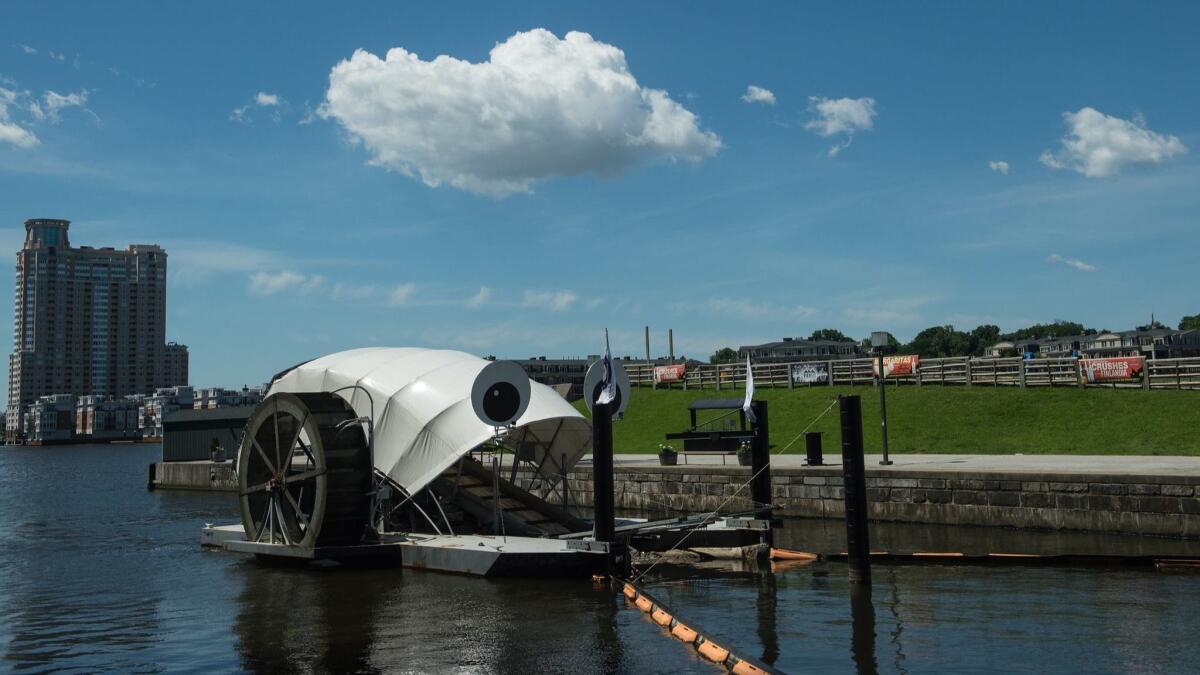Look out, Twitter: State OKs funding for snail-like water wheel

- Share via
As anticipated, the state has awarded Newport Beach a $1.7 million grant needed to fund a water-wheel trash-collecting vessel for Upper Newport Bay — one that’s likely to come with a Twitter account.
The California Ocean Protection Council adopted the grant award at its Thursday board meeting in Santa Cruz. The city will now work to obtain the necessary regulatory permits.
The planned solar and hydraulically powered water wheel will be placed at the top of Upper Newport Bay by the Jamboree Road bridge. It is intended to capture garbage flowing down San Diego Creek from inland Orange County before it can hit Newport Harbor and the Pacific Ocean.
From its stationary position, the wheel will funnel debris into an onboard holding bin that will be emptied periodically. The device should prevent up to 80% of the floatable debris that enters the bay from getting past the jetty and hitting the open ocean.
The water wheel’s design lends itself to whimsy. The vessel would look like a snail with a paddlewheel, or a conch shell crossed with a steamboat. In Baltimore, the first city in the United States to use a water wheel, a googly-eyed trash wheel family — “Mr. Trash Wheel,” “Professor Trash Wheel” and “Capt. Trash Wheel” — gobbles rubbish from the waters around the port city. All three have Twitter accounts.
Newport is expected to be the first West Coast city to use the trash-snaring device.
With tentative approval from the state lined up, the Newport Beach City Council voted in September to budget the major funding for the water-wheel project and to accept a study that said the trash collector wouldn’t have significant, if any, negative effects on the environment.
The grant money comes from funding generated by California’s Water Quality, Supply and Infrastructure Improvement Act of 2014.
Twitter: @Daily_PilotHD
All the latest on Orange County from Orange County.
Get our free TimesOC newsletter.
You may occasionally receive promotional content from the Daily Pilot.




